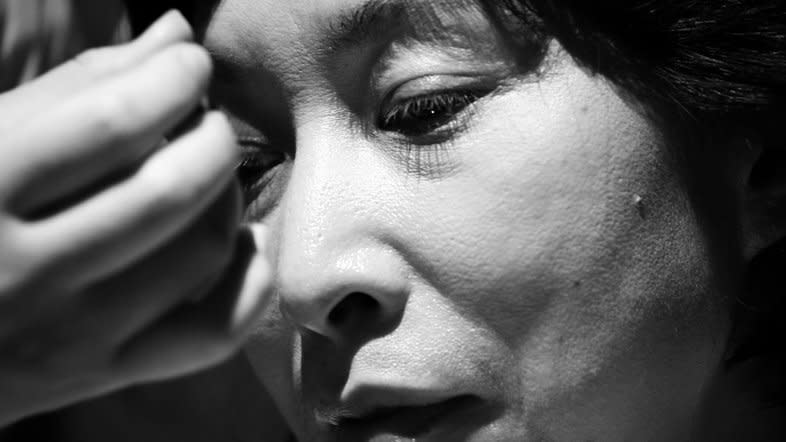Annet Gelink Gallery proudly presents its second solo show by Meiro Koizumi (1976, Gunma, Japan): Defect in Vision. Through performances, conversations and constructed scenarios epitomized as video installations Meiro Koizumi expresses his permanent search for identity within exploring the profound depth of the human soul and psychology. Permanently aware of either global powers or local political events, but always having the Japanese tradition in mind, he handles his estrangement and frustration in placing individual characters in awkward and provocative situations.
Defect in Vision combines Koizumi's two-dimensional works with his new video installations. In the first space the book Emperor (1947) is shown. Emperor resulted from the series of photos taken and published by Life Magazine in 1947 called "Sunday at Hirohito's -Emperor poses for the first informal picture". It was for the first time that the Japanese public was able to see their emperor in daily settings. The purpose was to provide the image of the emperor as an ordinary person instead of the divine figure he was claimed to be by tradition. In 1946, Hirohito renounced his divinity with his Humanity Declaration. The visitor is encouraged to leaf through the book, above which is hanging a selection of framed pages taken from it. Koizumi painted anatomical images over Hirohito's photos to push the concept of humanization even further.
In the main space the video work Defect in Vision (2011) is projected on a double-sided screen, showing the same situation and conversation through different angles and perspectives. One can follow a conversation over a dinner table in a traditional Japanese interior. Two blind actors talk about World War II in the privacy of their warm home, wondering when the war will be over whilst eating, drinking and reading the newspaper. The scene is repeated several times, while more and more objects are being removed from the table, exposing the blindness of the actors.
Traditionally blindness has been romantically used by arts and literature as a metaphor of the power to see things invisible, and it is used as an effect to create a dramatic story. Blind characters are usually played by actors who can see. As in many of his works, in Defect in Vision Koizumi turns the tradition around, in this case asking a truly blind person to act as someone who can actually see. Defect in Vision illustrates Koizumi's interpretation of blindness in a moving but also acutely distinctive way.
The exhibition continues in The Bakery with Mnemonic - (Father) (2010-2011), a video installation with photos. Situated in a light space Mnemonic - (Father) contrasts to the main space which is submerged in darkness. 'Mnemonic' refers to a tool which helps one to remember. For this work, Koizumi invited his father to draw a picture on his ceiling of a Boeing B-29 Superfortress: the airplane used by the American air forces during World War II, and most famously for dropping the atomic bombs on Hiroshima and Nagasaki in 1945. When Koizumi was nine years old his father drew him a picture of this airplane gracefully flying in the sky, from his childhood memory. Koizumi recreates this moment from his own childhood, this time asking his father to draw the picture directly on the ceiling, while Koizumi recorded the sound of graphite pencil on the wall.
Meiro Koizumi studied at the International Christian University, Tokyo and the Chelsea College of Art and Design, London as well as the Rijksakademie van Beeldende Kunsten, Amsterdam. Recent and upcoming solo exhibitions include the Museum of Modern Art in New York (January 2013), Art Space Sydney (2011) and the Mori Art Museum in Tokyo (2009). He participated in numerous group shows, such as at the Hara Museum of Contemporary Art, Tokyo, the Museum of Contemporary Art Tokyo (2011), the Liverpool Biennial (2010) and Media City Seoul (2010. Koizumi will have a solo exhibition at the MoMA New York. His works are included in a.o. the collection of the Museum of Contemporary Art in Tokyo.


